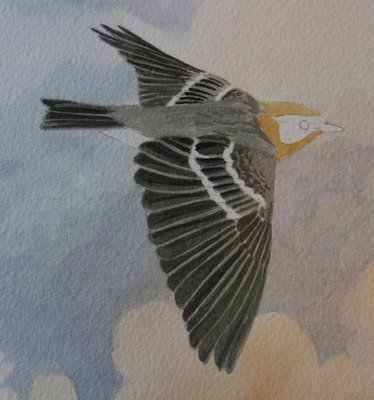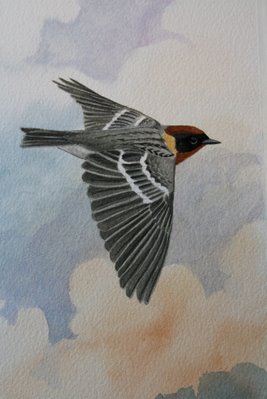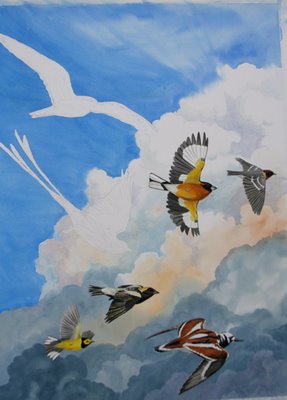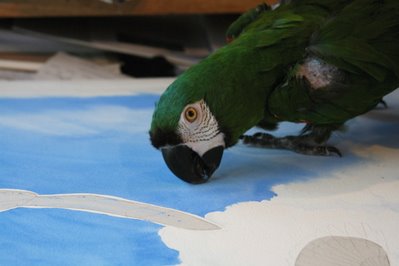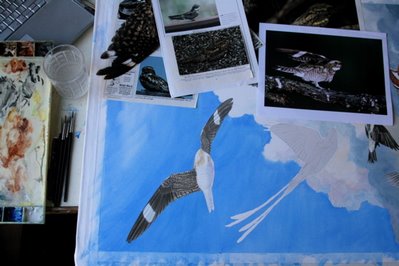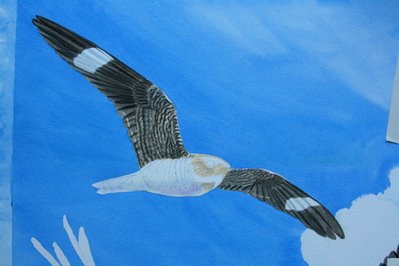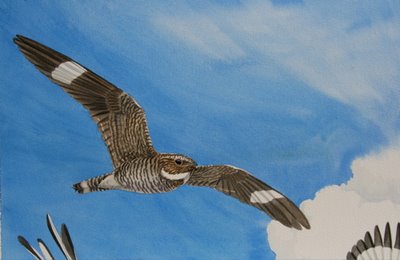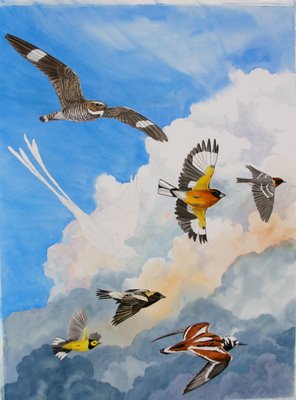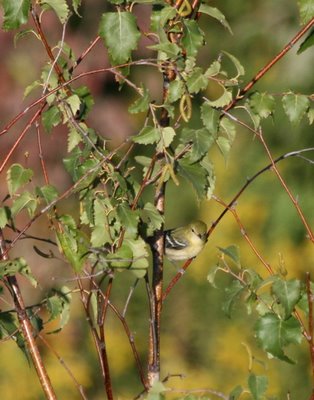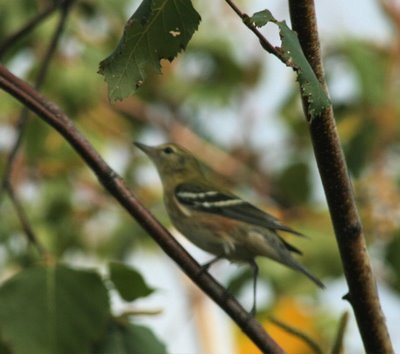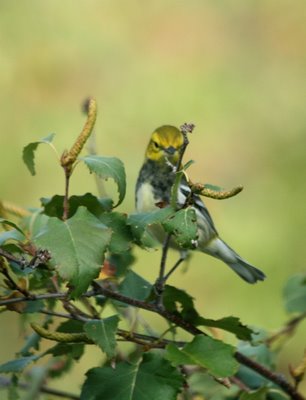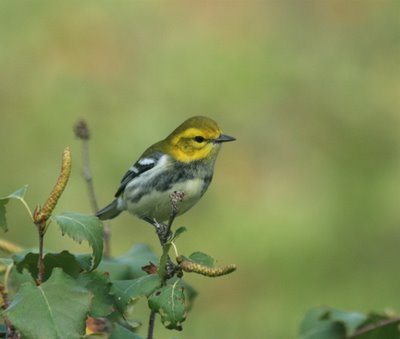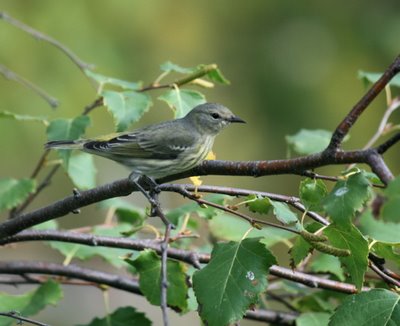Birds of Passage
They are still coming, the migrants, though the peak has passed. This morning, a blackpoll warbler gave its sibilant coded song, herald of the end of migration. They have the farthest north to go of almost any warbler; I'm sure it's still snowing on their breeding grounds in far northern Canada right now.
Rainy weather prevents many from singing, and we have to get out and search for them visually, or we'd never know they were there. I've seen five magnolia warblers for each one I've heard singing this spring.
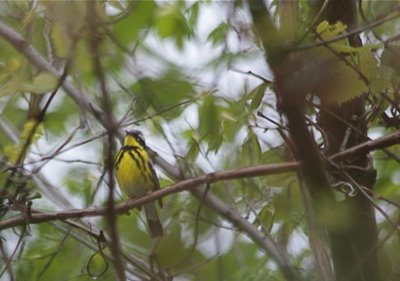
While gardening May 15, I heard not one but two Canada warblers singing from our woods. I threw down the trowel and tromped down there to feast my eyes. I saw one, but never got the lens on him. Next spring...
This blue-headed vireo never said a word as he hopped through the sycamore, but we spotted him anyway.
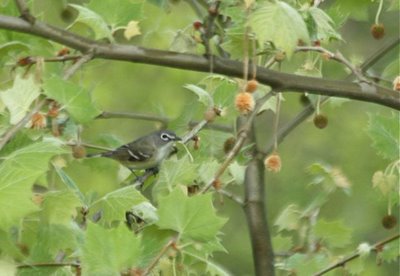
The bay-breasted warbler's weak s'wee s'wee is easily overlooked as emanating from an American redstart, but we've learned to chase the wispy song down.
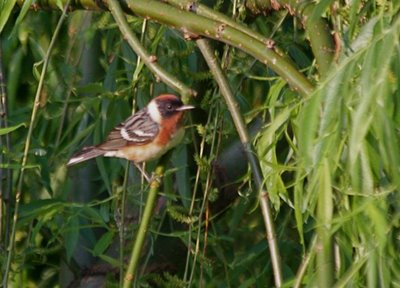
The prize: a designer warbler in rust, buff, black and gray.
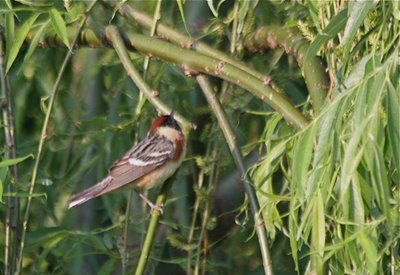
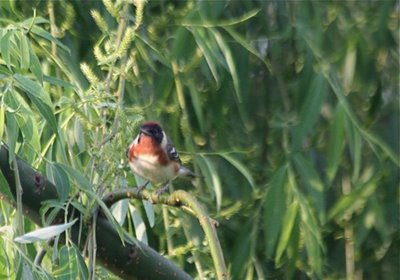
Finally, a decent shot. Morning light is lovely, but it can be harsh, and Bill and I madly twiddle our camera dials looking for the right exposure, while trying to stay on a rapidly flitting warbler.
It ain't easy, but it's really fun.
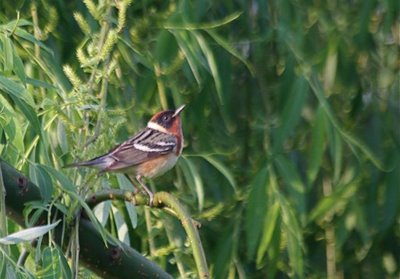
Black-billed cuckoos are raiding the tent caterpillar nests and gathering twigs for their own. They're ridiculously easy to call in using only my voice, imitating their soft tripled coos.
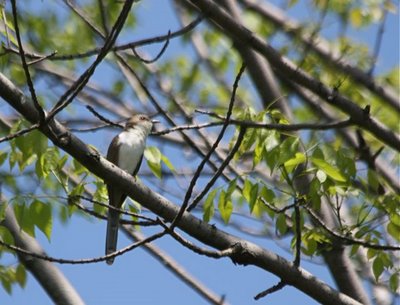
Notice how his tail spots are small and grayish, and how his wings lack the strong rufous of the yellow-billed cuckoo's. There's also that black bill.
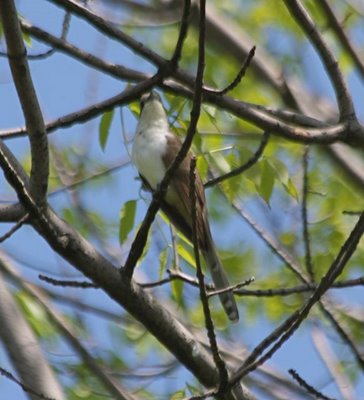 Cuckoos are a lot more common and easier to see than people realize. Or maybe we're just lucky.
Cuckoos are a lot more common and easier to see than people realize. Or maybe we're just lucky.Yes, that's it. Speaking of lucky, we've had orchard orioles nest in our yard only once in 17 years. Each spring I cross my fingers and hope.
A young male belts out his chattery song from a wind-whipped birch. He's olive green with spots of rust, and the famous black "beard."
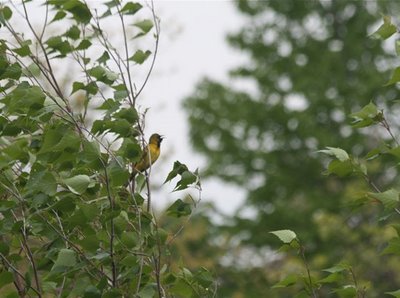 Off he goes, but maybe some spring they'll stay and grace us again. Oh, to have orchard orioles feeding their babies in my vegetable garden once more! A young male was singing in the yard again today. I can hope.
Off he goes, but maybe some spring they'll stay and grace us again. Oh, to have orchard orioles feeding their babies in my vegetable garden once more! A young male was singing in the yard again today. I can hope.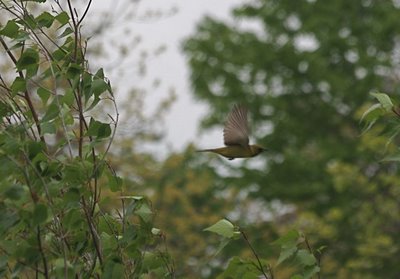
It's another clear, pellucid day, the kind of day when a load of laundry dries in an hour, when I have to water the bonsais twice, when I haul out my 600-foot garden hose to water the lettuce because all the rain that seemed like it would never stop is simply gone. A classic southern Ohio spring. You're drowning, and then you're dry, and that's pretty much it. Not complaining, just sayin'. And loving every minute of it.
Labels: bay-breasted warbler, black-billed cuckoo, blue-headed vireo, magnolia warbler, orchard oriole

